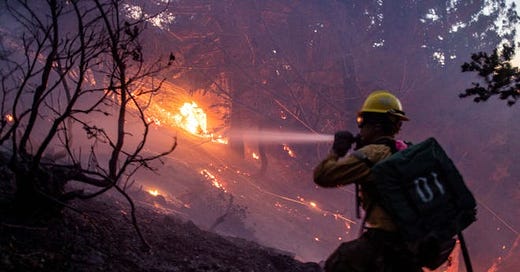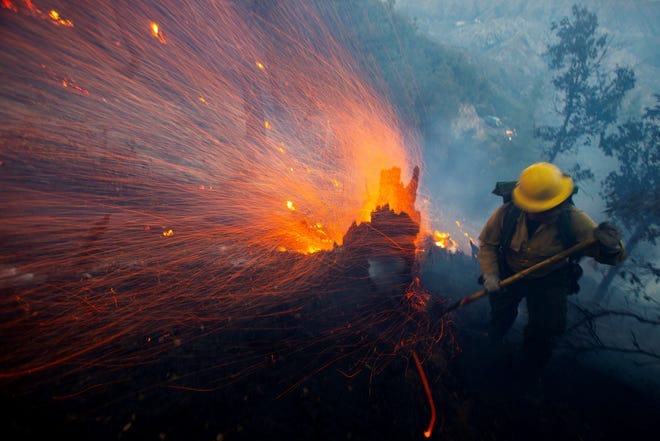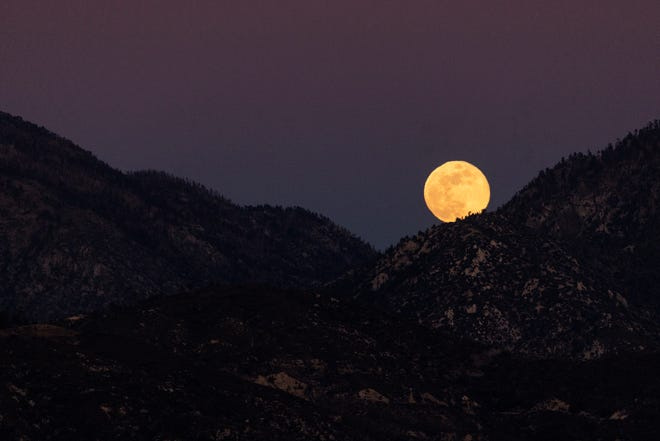HEADLINE: “USDA orders California national forests open for major logging” By Janet Wilson
“The Los Padres forest, which spans lands in Ventura, Santa Barbara, Monterey, San Luis Obispo and Kern counties, could see as much as 235,000 acres logged and grasses cleared per Trump administration
USDA orders California national forests open for major logging
Palm Springs Desert Sun
SKIP
Southern California's wildfire-ravaged national forests soon could fall under the ax, literally.
An emergency order issued by U.S. Department of Agriculture Secretary Brooke Rollins on Friday, April 4, directs federal personnel to increase timber quotas by 25% on nearly 113 million acres of national forests across the nation.
A map accompanying the order with areas targeted by the declaration shows large swaths of California, including northern woodlands and what appear to be the Angeles, San Bernardino, Los Padres and Cleveland national forests.
"They are after timber. The Angeles National Forest does have a good pine forest component. Up until now there is not much logging on the Angeles, but this order could change that, " said Randi Spivak, public lands policy director for the Center for Biological Diversity, which will sue to try to stop specific projects under the declaration.
Charred portions of the forest that burned in the Eaton Fire are at "significant" risk of debris flows, flooding and mudslides due to steep, bare slopes that cannot hold water and vegetation loss, according to a separate USDA post-fire emergency risk assessment.
That report outlines the benefits of pine trees that didn't burn completely: "Needles remaining in trees intercept rainfall and once needles fall to the ground, offer protective cover to damaged soils, reducing erosion and providing surface roughness," the report states.
The Southland's forests are vast wildlands stretched above often heavily urbanized valleys, and are largely highly flammable brushy chaparral and coastal sage scrub, much of which has burned repeatedly in recent years.
Friday's order, which follows two earlier executive orders in March by President Donald Trump, says a national emergency exists due to heavy reliance on imported timber, wildfire risk and insect infestations.
Rollins said streamlining permitting for sharply increased logging production will help "to achieve relief from threats to public health and safety, critical infrastructure, and/or mitigation of threats to natural resources ... These actions will improve the durability, resilience, and resistance to fire, insects, and disease within national forests and grasslands across the National Forest System."
Logging trade groups support orders
Logging trade groups strongly favor the pro-timber orders.
“These are common-sense directives,” Travis Joseph, president of the American Forest Resource Council, a timber industry trade group, said in March. “Our federal forests have been mismanaged for decades and Americans have paid the price in almost every way – lost jobs, lost manufacturing, and infrastructure.”
Get the Daily Briefing newsletter in your inbox.
Start your day with the morning's top news
Delivery: Daily
Your Email
They also say more logging will reduce wildfire threats in the Golden State, the Pacific Northwest and elsewhere. But environmental groups say the exact opposite is true.
"Even though the secretary's order cloaks it in wildfire prevention, nobody should be fooled. This is all about getting the board feet cut, just maximizing timber and maximizing timber industry profits," said Spivak.
She said even the roots of a standing dead tree after a wildfire can help anchor a hillside and keep it from sliding. Salvaging burned trees for sale can be even more harmful than a fire, she said, because swaths of ground are typically heavily bulldozed to get the trees out. That compacts the soil, increasing the risk it can't absorb rains.
Los Padres most likely to be logged
The Los Padres forest, which spans lands in Ventura, Santa Barbara, Monterey, San Luis Obispo and Kern counties, could see as much as 235,000 acres logged and grasses cleared per the Trump administration's orders, according to Los Padres Forest Watch. Portions of the pine stands in the San Bernardino forest could be targeted for timber production, too. The Cleveland forest, the smallest of the four, has fewer stands of trees suitable for logging and its northern reaches have almost completely burned and are closed to hiking, camping and other recreation.
Spivak said while her organization won't sue to stop Friday's order, they will likely challenge specific projects on the grounds that there is not a true emergency, and imperiled wildlife protected under the Endangered Species Act could be illegally killed or their habitat harmed. Legally protected species in southern California forests include condors, arroyo toads, the California gnatcatcher, a tiny songbird, and myriad flowering plants.
National forests were originally created beginning in 1891 as reserves to protect watersheds and forests for drinking water and timber supply, after heavy overlogging threatened both. Under the updated 1976 National Forest Management Act, the forest service's multi-pronged mission is to protect watersheds, timber stands and healthy wildlife populations. By prioritizing timber above the other two, the agency is violating Congressional law, said Spivak.
“Unleashing the bulldozers and chainsaws on these beautiful public lands will result in clearcuts, polluted streams and extinct species. It’s well known that heavily logged forests are the most flammable," said Spivak. "We will use every legal tool at our disposal to halt the Trump administration's implementation of this order.”
BOTTOMLINE: The rash of recent forest fires in California have most likely been caused by poor forest management over the last 25 years.









Yes, let’s use these renewable timber resources.